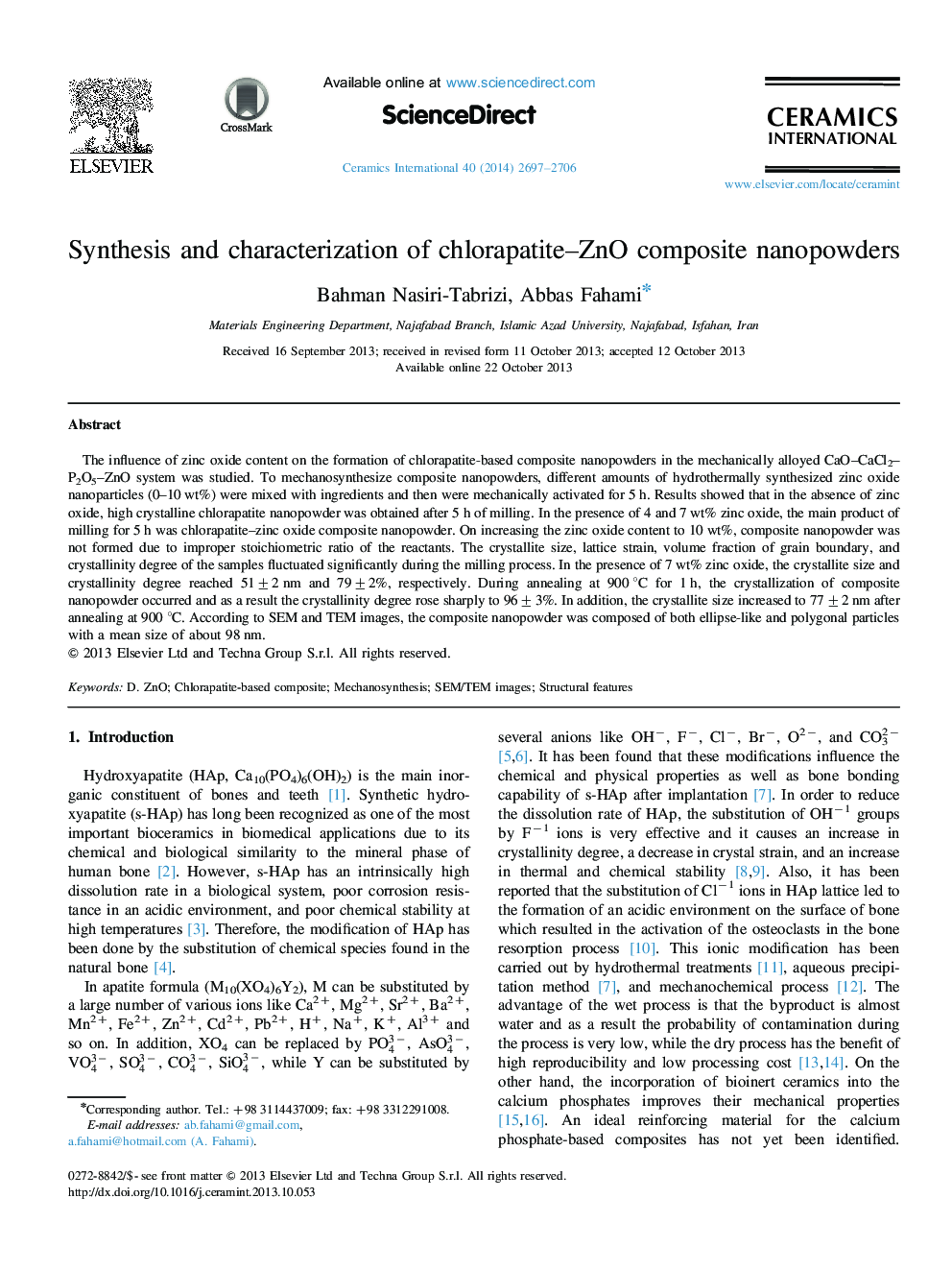| کد مقاله | کد نشریه | سال انتشار | مقاله انگلیسی | نسخه تمام متن |
|---|---|---|---|---|
| 1461312 | 989618 | 2014 | 10 صفحه PDF | دانلود رایگان |

The influence of zinc oxide content on the formation of chlorapatite-based composite nanopowders in the mechanically alloyed CaO–CaCl2–P2O5–ZnO system was studied. To mechanosynthesize composite nanopowders, different amounts of hydrothermally synthesized zinc oxide nanoparticles (0–10 wt%) were mixed with ingredients and then were mechanically activated for 5 h. Results showed that in the absence of zinc oxide, high crystalline chlorapatite nanopowder was obtained after 5 h of milling. In the presence of 4 and 7 wt% zinc oxide, the main product of milling for 5 h was chlorapatite–zinc oxide composite nanopowder. On increasing the zinc oxide content to 10 wt%, composite nanopowder was not formed due to improper stoichiometric ratio of the reactants. The crystallite size, lattice strain, volume fraction of grain boundary, and crystallinity degree of the samples fluctuated significantly during the milling process. In the presence of 7 wt% zinc oxide, the crystallite size and crystallinity degree reached 51±2 nm and 79±2%, respectively. During annealing at 900 °C for 1 h, the crystallization of composite nanopowder occurred and as a result the crystallinity degree rose sharply to 96±3%. In addition, the crystallite size increased to 77±2 nm after annealing at 900 °C. According to SEM and TEM images, the composite nanopowder was composed of both ellipse-like and polygonal particles with a mean size of about 98 nm.
Journal: Ceramics International - Volume 40, Issue 2, March 2014, Pages 2697–2706